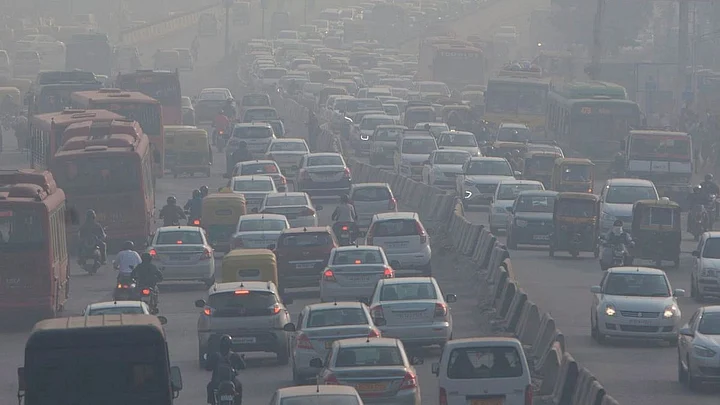After a comparatively clean October, Delhi's air quality fell to 'hazardous' level on Friday, 4 November – a day after Diwali. However, not just the national capital, air quality witnessed a severe dip across the country.
The National Air Quality Index (AQI) was launched in 2014 by the Government of India under the Swachh Bharat Mission.
According to the Press Bureau of India, the Ministry of Environment, Forest, and Climate Change "outlined AQI as 'One Number-One Colour-One Description – for the common man to judge the air quality within his vicinity."
What is AQI? How is it calculated? Is it different for all countries? The Quint answers all your questions here.
What is AQI?
According to the Central Pollution Control Board (CPCB), Air Quality Index is used for communicating air quality status with general public in an easy-to-understand language. It translates complex air pollutants data into a single number, nomenclature, and colour-coded range.
How many categories of AQI are there?
Good (0-50)
Satisfactory (51-100)
Moderately Polluted (101-200)
Poor (201-300)
Very Poor (301-400)
Severe or Hazardous (401-500)
They are determined by the ambient concentration values of air pollutants and their impact on health.
How many air pollutants are included in the AQI calculation?
As per FIT, India considers eight air pollutants according to which National Ambient Air Quality Standards (NAAQS) have been set. They are:
PM10
PM2.5
Nitrogen dioxide (NO2)
Sulphur dioxide (SO2)
Carbon monoxide (CO)
Ground-level ozone (O3)
Ammonia (NH3)
Lead (Pb)
How is AQI calculated?
The concentration of air pollutants is measured and reported.
As per the CPCB, the AQI is calculated using average concentration value of an individual pollutant over a standard time interval of 24 hours, except for eight hours in case of CO and O3.
All eight pollutants are not monitored at every location.
Data should be available for at least three pollutants, one of which should be either PM10 or PM2.5.
A web-based system is designed to source data from monitoring stations without human intervention. It provides the AQI on a real-time basis.
Is AQI calculated separately for all pollutants?
Yes, the AQI is calculated separately for each pollutant.
As per FIT, the highest of the AQI values calculated individually for each pollutant is considered the final AQI.
For example, if the separate pollutant index for PM10 is 80, PM2.5 is 75, NO2 is 50 and Pb is 85, then the AQI will be 85 - the value of the highest (the worst performing) sub-index.
What if a city has several monitors?
In that case, the average from all over the city is used and reported by CPCB in its AQI bulletin.
Is AQI calculation different for each country?
Every country determines AQI on the basis of their national air quality standards, according to FIT. Index nomenclature and breakpoints varies from country to country.
What are the health impacts of different categories?
As per CPCB, following are the associated health impacts with different AQI categories:
Good (0-50): Negligible impact
Satisfactory (51-100): May cause respiratory issues to some
Moderately Polluted (101-200): May cause breathing issues to people with lung ailments, heart diseases, children and older people
Poor (201-300): May cause breathing issues to people on long exposure and to those with heart and lung diseases
Very Poor (301-400): May cause respiratory illness on long exposure
Severe (401-500): May cause respiratory issues even in healthy people and serious impact on those suffering from lung and heart disease.
Where can I check the AQI of my city?
You can check the AQI at the official website of CPCB that regularly updates its AQI reports.
SAFAR is an app by Ministry of Earth Sciences, available in multiple languages. It is India's first air quality forecasting system for metro cities.
Sameer is an app by CPCB. It provides hourly updates of the AQI and can also be used to register complaints related to air pollution.
Some other apps that can be used are: AirVisual, AQI India, and Plume Air report.
